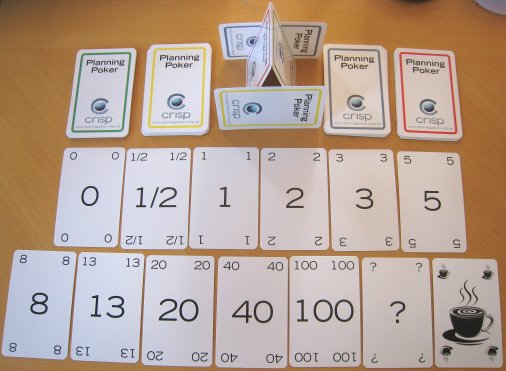Planning Poker Wikipedia


Planning Poker Wikipedia
- Built by Three Five Two is an innovation and growth firm. We engage with companies to: find and engage new customers or markets; pioneer new ventures; and/or create new products, services & business models.
- Our tool, Planning Poker®, is a fun, refreshing way to run through a list of user stories and assign effort points to them as a team. Over time, the team establishes a sprint velocity, or total number of effort points they can feasibly complete in one sprint, which helps determine how many stories a team can pull in during sprint planning.
- One pitfall of Planning Poker resides in making “convergence to consensus estimate” an obligation rather than a natural result of the conversation that follows a round of play. Doing so runs the risk of erasing useful information, i.e. The degree of uncertainty conveyed by a wide spread in the initial estimates.
Planning poker, also called Scrum poker, is a consensus-based, gamified technique for estimating, mostly used to estimate effort or relative size of development goals in software development. In planning poker, members of the group make estimates by playing numbered cards face-down to the table, instead of speaking them aloud. How to play Planning Poker. This guide assumes that you already know what planning poker is about and how to play with real cards. If you need any information about planning poker see the wikipedia page. To play planning poker using this application is very simple.
Planning Poker® in Scrum brings together multiple expert opinions for the agile estimation of a project. In this type of agile planning, we include everyone from programmers, testers and database engineers to analysts, user interaction designers and more. Because these team members represent all disciplines on a software project, they’re better suited to the estimation task than anyone else.
To get started with Planning Poker with your team, you can purchase Planning Poker cards from Mountain Goat Software. Or, play Planning Poker online for free.
How Does Planning Poker Work?
At the start of this agile planning exercise, each estimator is given a deck of Planning Poker cards. Each card has one of the valid estimates on it, for example: 0, 1/2, 1, 2, 3, 5, 8, 13, 20, 40, 100 and infinity.
For each user story or theme to be estimated, a moderator (usually the product owner or an analyst) reads the description. There will be some discussion, where the product owner answers any questions the estimators have. But the goal of Planning Poker in Scrum is not to derive an estimate that will withstand all future scrutiny. Instead, we want a valuable estimate that can be arrived at inexpensively.
After discussion, each estimator privately selects a Planning Poker card representing his or her agile estimation. Once each estimator has made a selection, cards are simultaneously turned over and shown so that all participants can see one another’s estimate.

Estimates will likely differ significantly. And that’s OK. The highest and lowest estimators explain their perspective so that the team can know where they’re coming from. The moderator takes notes during this agile planning session that will be helpful when the story is programmed and tested.
After discussion, each estimator re-estimates by selecting a card. Often, the estimates will converge by the second round. If not, repeat the process until the team agrees on a single estimate to use for the story or these. It rarely takes more than three rounds in agile estimation to reach the goal.
Tips for Planning Poker in Scrum
Here’s some tips for common challenges in Planning Poker:
- Keep discussions productive: Consider purchasing a two-minute sand timer, and allowing anyone in the meeting to start it at any time. When the sand runs out, the next round of Planning Poker cards is played. This helps teams learn to estimate more rapidly within agile planning.
- Break out into smaller sessions: It is possible to play Planning Poker with a subset of the team. It’s not ideal, but a good option if there are many stories to be estimated, as can often happen at the start of a new project.
- Choose the right time to play: Estimating teams will need to play Planning Poker at two different occasions. The first time, teams will usually estimate a large number of items before the project kicks off or during first iterations. The second time, teams need to put forth ongoing effort to estimate new stories identified during an iteration.
Planning Poker Wikipedia Gratis
You can learn more about Planning Poker in detail in the Mountain Goat Software store or in Mike Cohn’s book, Agile Estimating and Planning.